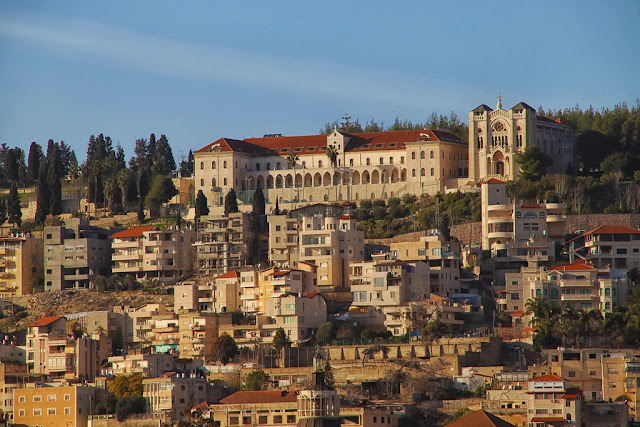
Here is a short apology for the long-standing custom of the cassock, based on its history in my life.
My first thoughts about being a priest go back to my first days in grade-school seeing the parish priest, Msgr. Jones, wearing his cassock at that parish in Wilmington, NC. I remember him in his black house cassock as my first inspiration towards a priestly vocation, and the cassocks we altar boys wore to serve Mass. I wanted to be a priest from the first time I saw the priest wearing the cassock. The school nuns (Sisters of Mercy, Belmont Province) still wore habits throughout the 1970's. The pastor of that same home parish during my high-school and college years also wore his cassock for Sunday Mass. Surely I had seen the cassock before those school-day years, along with the religious habits of sisters, at religious shrines and churches which I frequented with my family from the time I was conceived in the womb in upstate NY. My first living memory, in fact, is of a nun, in full habit, taking me joyfully and tenderly by the hand to the lollipop jar. I was probably three.
In my catholic university/seminary years in the North Eastern US there were some senior priests who regularly wore the cassock, and, by that time I was frequenting the Traditional Latin Mass of a priest from another parish of my NC hometown, for which, of course, he wore the cassock. In the diocese of my seminary there were priests who always wore cassocks for ministry, and gave monthly days of recollection for seminarians and clergy. And there was an annual seminar for seminarians/priests in the Boston area which I attended from the late eighties throughout the nineties and there we, the seminarians, also freely wore cassocks. Throughout my eleven years of seminary we wore cassocks to serve Mass and we loved to wear it such that even after Mass we would often leave it on for breakfast at the University dining hall with all the students. Everyone seemed to love the cassock (except perhaps a few of the seminary faculty who were suspicious of it because of some personal hangups).
In 1999, the year after I was ordained a priest, the Conference of Bishops of the United States specified that the cassock was considered legitimate clerical attire. Of course my contemporaries and I knew that from the universal norm of the Church and the immemorial custom of the clergy, which I had witnessed throughout my life, and which was also influential in my vocation to the priesthood. I have worn the cassock habitually for over two decades of parish priesthood, continuing the tradition of many men whom I admire and strive to follow. The cassock is a normative and simple yet elegant and supernatural and eminently practical priestly attire. And the saturno (the distinctively clerical street hat) goes very well with it! The only people that seem to have a problem with the cassock is a certain number, ever decreasing, of clerics. The faithful and the unbiased love it, not to mention the majority of the younger clergy.
Lest we forget the obvious, the most visible priest in the world during my lifetime is always in his cassock, even, at times, heroically so: the Successor of Saint Peter, the Bishop of Rome, the Holy Father, the Pope. Along with all things traditional and Roman, we love the cassock. It is a sign of "romanitas," and we follow the good example of the Holy Father in this. Pope John Paul II even wore the cassock to Mexico when it was still illegal for any priest to do so. Pope Benedict humbly, yet boldly, even wore the red papal saturno on occasion, for the glory of Holy Mother Church and the furthering of the Catholic faith in the world, boosting the number of priestly vocations world-wide! We are ambassadors of Christ, dispensers of the mysteries of God, that supernatural office, with the cassock, is obvious for everyone to see.
Question. Why do some clergymen despise the typical and traditional attire of the priest while never seeming to mind the religious attire and headdress of Muslims or Jews, etc.? Shall we call it self-hating Catholicism, or simply anti-clericalism? It is the tyranny of a false pluralism, a symptom of religious and doctrinal relativism, that everything is good except, of course, Christian/Western/European civilization. That all started with the Black Legend, the mocking, despising, smearing and destroying of all things Roman, Catholic and/or Spanish, which continues to our own day.
Saint Francis Borgia, SJ, pray for us!
N.B. "[Saint Francis Borgia] was typical of the patrician saints, self-effacing, determined, enterprising, winning people of all ranks by his kindness and courtesy." Donald Attwater,
A Dictionary of Saints, Penguin, 1965, 139.






















_Painting_by_Philippe_-_(MeisterDrucke-1002935).jpg)




















